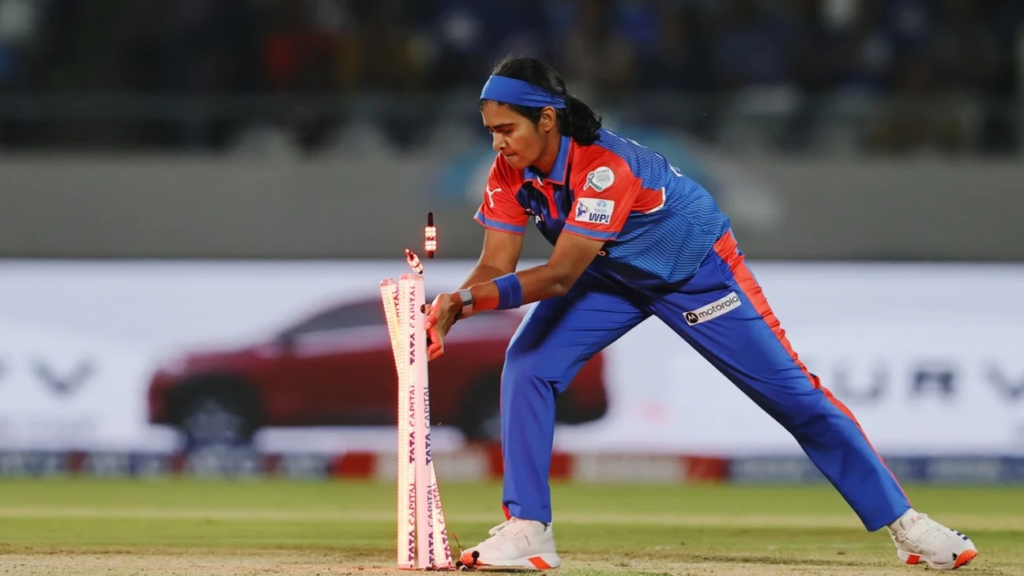
Bail glitch forces a new rule change in the WPL with wicket considered broken only when bail fully dislodged.
Bail glitch prompts WPL rule change in the wake of the contentious run-out incidents during the last-ball thriller between Delhi Capitals and Mumbai Indians.
The WPL has informed teams that in order for umpires to determine that a wicket is broken for run-out and stumping decisions, the LED bail must be completely removed.
This implies that moving forward in WPL 2025, the pre-existing playing condition—which specifies that the stumps are considered broken when the bails light up—will not be applicable. The following is stated in Appendix D of the tournament’s playing conditions, which was distributed to teams prior to the season: “where LED wickets are used, the moment at which the wicket has been put down shall be deemed to be the first frame in which the LED lights are illuminated and subsequent frames show the bail permanently removed from the top of the stumps.”
The rule adjustment was made because, even when both spigots have remained in the grooves on top of the stumps, the batch of bails being utilised during this WPL have been lighting up at the least disturbance. A bail is only fully dislodged in accordance with cricket laws when it totally separates from the groove.
It is recognised that even with one spigot still in its groove during this WPL, the bails started to flash. Therefore, it was agreed that the third umpires would base their final decision on the point at which both spigots fall out of their grooves and the bail becomes fully dislodged.
For this reason, the third umpire for the Capitals vs. Mumbai game, Gayathri Venugopalan, based her final verdict in the three run-out decisions—which sparked intense discussion—on the moment the bails were fully out of their grooves.

